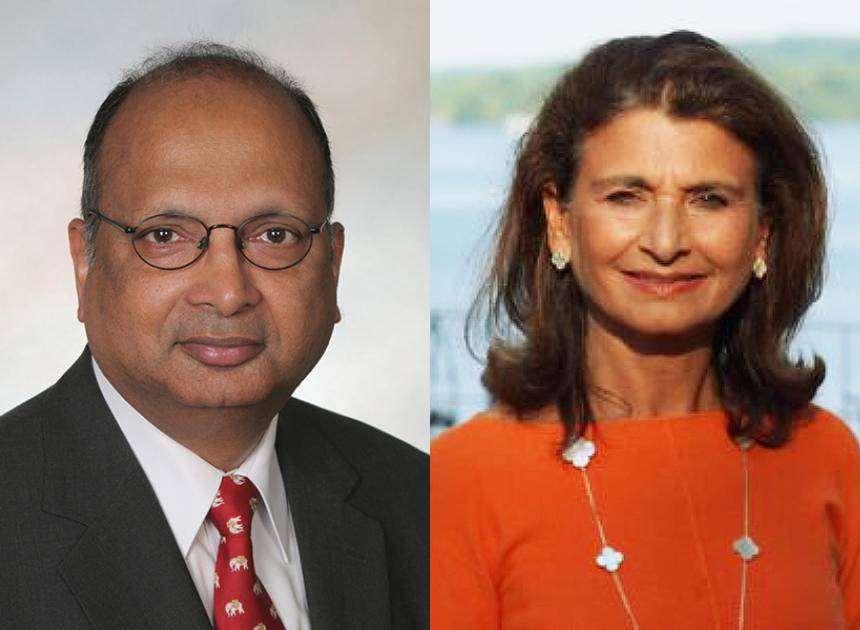
September 11, 2022: The Wireless History Foundation (WHF), a US-based non-profit organization formed to preserve and promote the history of the global wireless industry, has recognized the contributions of two born-in-India innovators. It will formally induct them into the Wireless Hall of Fame at a ceremony in the US capital, Washington DC, on October 20.
Professor Arogyaswami Paulraj, emeritus professor of electrical engineering at Stanford University in the US Silicon Valley, is being honoured for his invention of Multiple In Multiple out (MIMO), a wireless technology that sharply increases the data capacity of wireless networks used for 4G or 5G mobile systems and all WiFi applications. It achieves this by the use of multiple transmit and receive antennas so that more than one signal data signal can be used over the same radio channel.
To give an example that lay users can appreciate: your home WiFi router allows multiple devices – like a PC, a laptop, your smart TV, as well as the mobile phones used by all family members—to connect to the Internet simultaneously using a single wireless channel.
Prof Paulraj obtained a US patent for MIMO in 1994, only two years after he joined Stanford for pursuing post-doctoral research with another PIO, Prof Thomas Kailath, as his mentor. Since then Paulraj has founded or co-founded three startups – Iospan Wireless, Beceem Communications and Rasa Networks -- to exploit his invention. These companies were subsequently acquired by larger players like Intel, Broadcom and HP, who made commercial use of his innovations.
Interestingly, Paulraj has made major technological contributions in India prior to moving to the US: An officer of the Indian Navy, for 28 years, he obtained his PhD in electrical engineering, from IIT Delhi. He then helmed the project at the Defence Research and Development Organization’s Naval Physical and Oceanographic Laboratory, Kochi which led to the indigenous design, development and induction of the nation’s first ship-based anti-submarine detection system or Sonar, named APSOH... an early example of Atmanirbhar Bharat . He was also key to setting up three national research establishments in their formative years – the Centre for Artificial Intelligence and Robotics (CAIR) for DRDO, the Central Research Laboratories (CRL) for Bharat Electronics and the Bengaluru unit of the Centre for Development of Advanced Computing (C-DAC) for the Department of Electronics.
Paulraj continues to be a passionate proponent of Indian self-sufficiency in technology and visits the country of his birth frequently where his advice and expertise is being harnessed by the government, academia and private players in areas like 5G and semiconductor manufacture. His continuing services to India were recognized by the award of the Padma Bhushan in 2010.
Neera Singh’s crucial algorithm
A B.Tech in Chemical Engineering from IIT Kanpur (1981), Neera Tandon Singh went to the US where she obtained her Masters degree in the same field at Kansas State University. Along with her husband Dr Rajendra Singh, she co-founded Telecom Ventures LLC, a private investment firm in Miami and later in 1983, established LCC International (LCCI or Lunayach Communications Consultants). The duo used these companies as a springboard to launch numerous wireless and telecommunication systems around the world.
Ms Neera Singh headed software development in her companies and developed algorithms for many wireless engineering applications. Silicon India cites a Washington Post article of 1998 which says Neera wrote a piece of software that could detect and calculate interference at radio towers when setting up new mobile phone systems. The software helped telecom infrastructure builders avoid huge losses – and established Neera Singh as the go-to person for creating new wireless networks.
In its citation, the Wireless History Foundation says:
“As the industry grew, LCCI was responsible for the design of initial wireless networks across the globe including in the USA, Great Britain, Germany, France, Spain, India, Mexico and a number of other countries. Ms. Singh’s contributions span engineering, technology, and operations and finance/investments in the wireless industry. She not only served in leadership, oversight and management roles, but she also created software and algorithms used throughout the industry.”